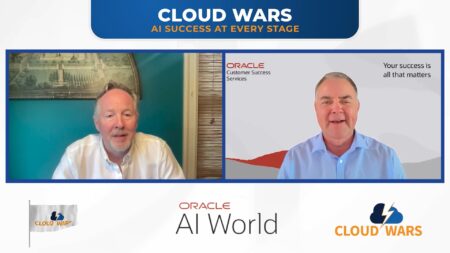Welcome to Prove It – a round table approach to the Acceleration Economy in which our Analyst Network discusses, debates, and defines pressing topics. Senior Analysts, Aaron Back hosts this episode focusing on automation. Analysts Frank Ohlhorst, Ronak Mathur, Kenny Mullican, and Wayne Sadin weigh in sharing their experience and expertise on the subject.
Meet the Analysts
- Frank Ohlhorst is an information technology industry analyst. He is also a Network Analyst focusing on IT Strategy and Security.
- Ronak Mathur is an Automation Architect for Mater. As a Network Analyst focusing on Automation, Ronak brings in experience specializing in Robotics Process Automation.
- Kenny Mullican is the CIO at Paragon Films, Inc as well as a Network Analyst focusing on business and technology strategy for the SMB CIO.
- Wayne Sadin is a Network Analyst focusing on Board Strategy. With 30 years in the IT field, Wayne brings in a wide range of expertise, including cybersecurity and digital business.
Highlights
00:26 – Aaron introduces this episode’s topic: Automation. He explains how automation has evolved over the years. For example, the pandemic essentially kick-started further leveraging automation tools.
The Boom of Automation
01:12 – After considering how automation continues to advance, Frank suggests the bigger challenges involve understanding what to automate and connecting people with it.
03:00 – Because he works within the healthcare industry, Ronak saw a major boom in intelligent automation, as the pandemic pushed them to start their digital transformation journeys.
05:06 – It’s no question whether automation is needed, as there is a shortage of people to do certain jobs, Kenny shares. However, the question still remains – is the pandemic the right time to start these projects if they weren’t already in place? As a CIO, he says you need enthusiasm from the people writing the checks to gain momentum to get these projects going.
06:46 – Wayne shares two quotes: First, from William Gibson, “The future is here.” The second quote read, “The worst time to acquire a new skill is in the middle of a fight.” He uses these two quotes to explain how emerging technology is already available and should be implemented now, so businesses can be prepared if they need to rely on new technologies in the future.
09:44 – The pandemic revealed a lot of bad processes that automation was able to resolve. However, the companies that weren’t prepared struggled, and many went out of business.
11:51 – When automation surfaced, it brought up the idea that the solution could reduce your reliance on offshoring. But if you don’t carefully execute it, you will be introducing more bad decisions that will be happening a lot faster.
Automating Industries
12:40 – Who are the thought leaders in a particular industry to really leverage the capabilities? For example, there are current problems within the supply chain. Had we pivoted more to digital transformation and better-incorporated automation, could have we avoided these issues?
13:15 – The supply chain was built around a couple of assumptions, like “goods move in one direction.” However, the pandemic highlighted issues from these assumptions that locked movement in a certain direction. Now, the supply chain industry must make advancements to incorporate inflation adjustments.
16:05 – Applying automation technology to logistics and routing deliveries can improve the supply chain.
17:25 – Automation applies to other areas, such as the healthcare industry. During the Industry Cloud Battleground Week digital event, for the healthcare roundtable, a representative from SAP discussed vaccine distribution and how it’s programmed within a system.
19:55 – There’s a very small number of companies that can change the supply chain. So, who is responsible for macro automation? Who can resolve issues with automation?
21:33 – One example of this is when Walmart required their sellers to use EDI. Although many opposed initially, eventually sellers made the shift to using EDI to work with Walmart.
23:13 – Digital transformation typically starts from the top down. Consider who you need to get on board for digital transformation so you’re already ahead when it’s time to mandate.
Challenges of Automation
24:32 – During the pandemic, some organizations made good decisions in starting their digital transformation. This led to an increased adoption rate of automation. However, when medium-scale organizations started adopting it at a fast pace, they also made poor decisions since they didn’t map out the process prior to implementation. There’s an urgency with little to no coordination.
27:17 – Regardless of the size of your company, you should have an architecture that lays out the structure of what decisions you’re going to make by default. The architecture should include tools as well as reusable components.
30:09 – Another challenge that many organizations face is the inability to measure the benefits of automation.
32:35 – The value of automation is because it solves a business problem. But, there’s also a challenge getting companies on board with digital transformation.
35:53 – It starts with company culture. Automation does not exist to replace workers from doing their jobs. The digital assistance it provides is an enabler, allowing workers to be more efficient with their jobs. When organizations take the time to implement automation correctly, it gives those within the organization an opportunity to upskill and grow in the future.






